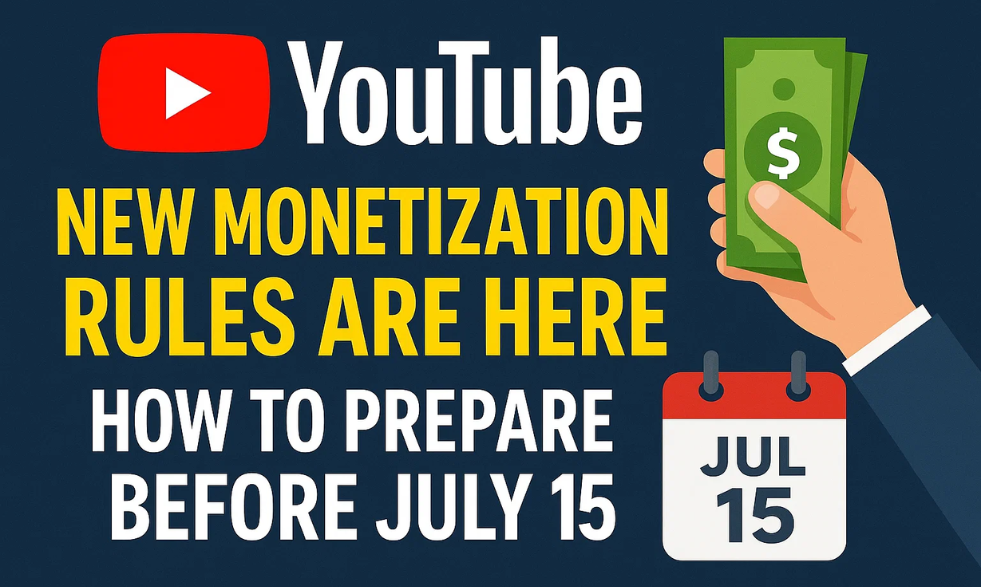YouTube new monetization rules will become effective on July 15, 2025. They’re aimed at low-effort, copy-and-paste content. Creators have to move fast to remain eligible. The change is aimed to reward uniqueness. This guide equips you to prepare effectively for success.
What Are the YouTube New Monetization Rules?
YouTube’s revised YouTube Partner Program (YPP) policies center around “authentic” content. Channels must have 1,000 subscribers and 4,000 watch hours or 10 million Shorts views in 90 days.
The platform then targets mass-produced content. This includes low-effort clips generated by AI with little human touch, repetitive templates, or low effort compilations. Reaction compilations and reaction videos are permitted but need to bring something new to the table.
YouTube creator liaison Renee Ritchie explained, “Mass-produced content has always been not eligible.” The update enhances detection of such content.
Why the Change?
The explosion of AI tools has flooded YouTube with poor quality content. AI voiceovers, stock footage, and repurposed clips overwhelm the platform.
They can spoil viewer experience and advertiser trust. YouTube’s new monetization policies seek to incentivize creativity.
Channels that utilize automated content are at risk of demonetization. The aim is to compensate creators who provide new, engaging content.
This move also safeguards the platform’s ecosystem. It makes the ads align with high-value content.
How to Prepare by July 15
Review your content now. Look out for repeated formats or excessive AI dependence. Analyze your videos using YouTube Studio. Remove or edit low-value uploads.
Insert unique commentary, narration, or creative editing. For instance, reaction clips should have personal comments. Tutorials need to provide unique explanations.
Avoid using AI voices without human input. Virtual YouTubers (VTubers) using original voices are safe. Ensure your channel’s theme shows variety.
YouTube’s reviewers will assess your entire channel. Regular uploads—three in 90 days—are key.
Use Analytics and Tools
You can use the YouTube Analytics to track viewer engagement. Focus on watch time, click-through-rates and audience retention.
Tools like TubeBuddy can help you pick out trending topics. Develop content with new perspectives. For instance, create your own reviews or skits. Repurpose content for Shorts but add new twists.
Post videos on social platforms such as Reddit to enhance reach. Keep yourself up to date through YouTube’s Help Center for policy updates. This will enable you to keep in step with the new regulations.
What Happens After July 15?
YouTube will employ AI and human moderators to implement the rules. Channels that do not comply can lose YPP status.
Individual videos may be demonetized. Repeated offenses can lead to channel suspension. Appeals can be made, but you’ll need to demonstrate originality.
The platform won’t completely ban AI tools. But content must reflect human effort. Creators who follow suit will survive. Those who are disregarding the rules risk revenue loss.
A Call to Action
YouTube’s emphasis on originality is an opportunity to be different. Begin checking your content now. Highlight creativity and worth. Connect with your viewers using genuine storytelling. The deadline of July 15 is near. Take action now to ensure the future of your channel.
Read more:
- Vumoo: A Destination Of Cool Movies And TV Shows!
- What is M4UMovies? Comprehensive Details with Top 5 Alternatives
- Simple Ways to Download Videos from Any Social Media Platform
